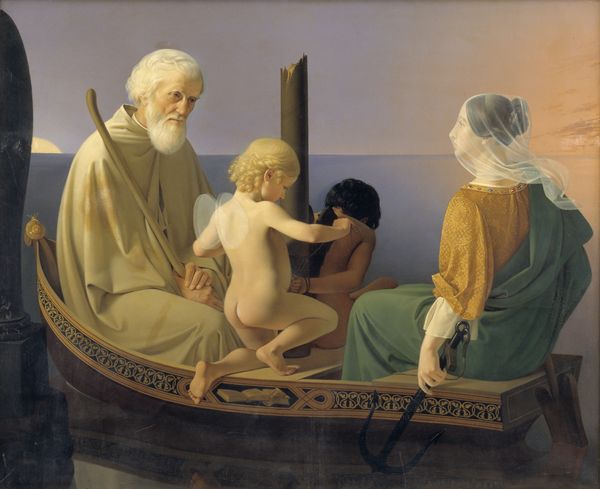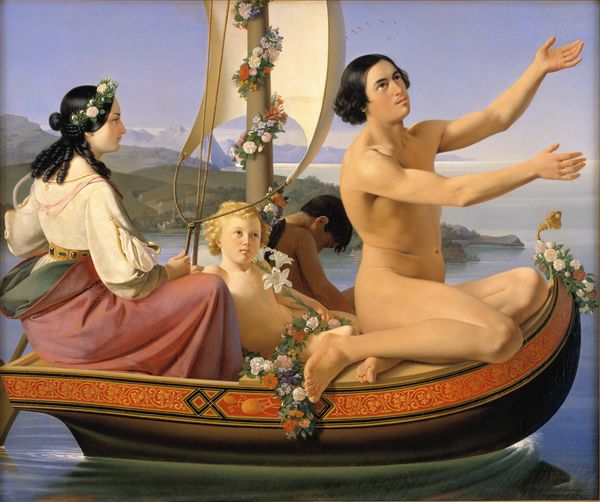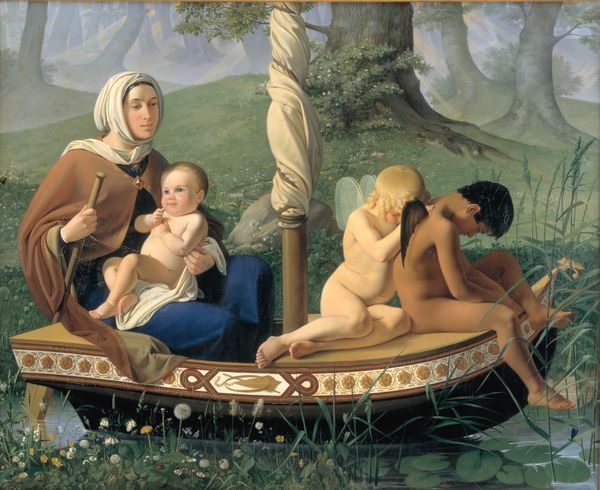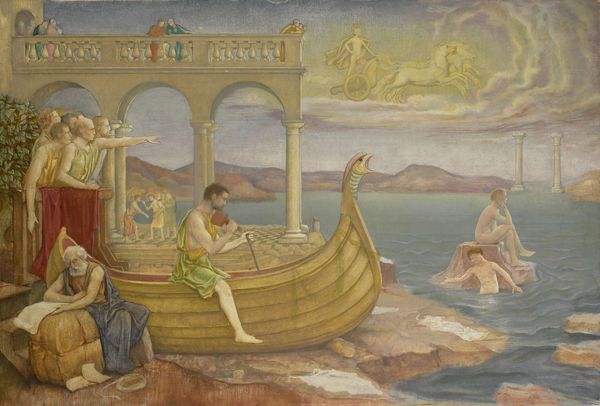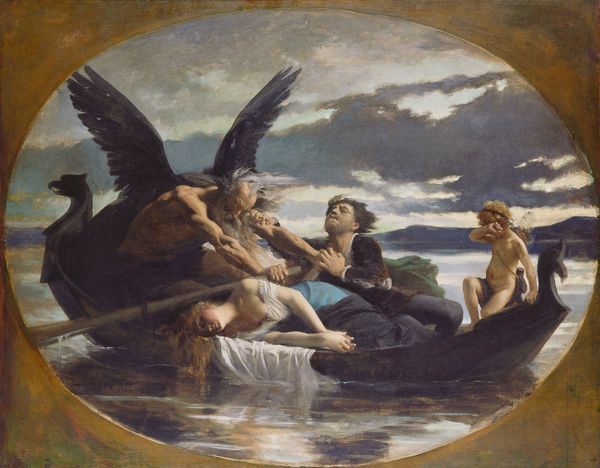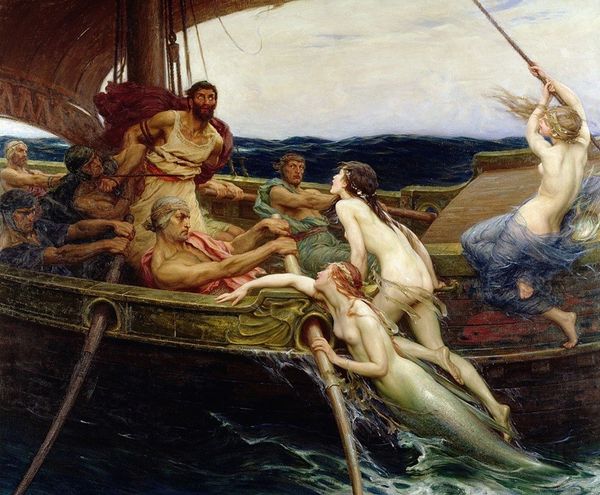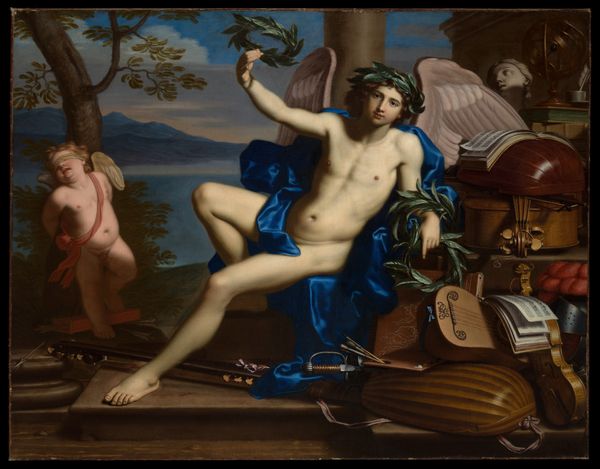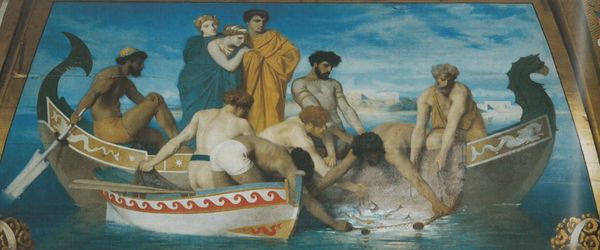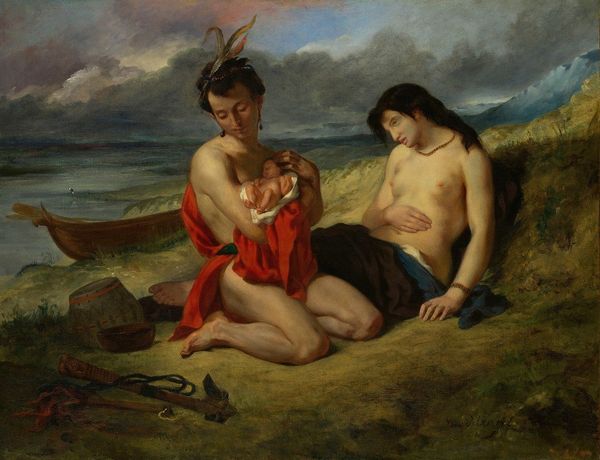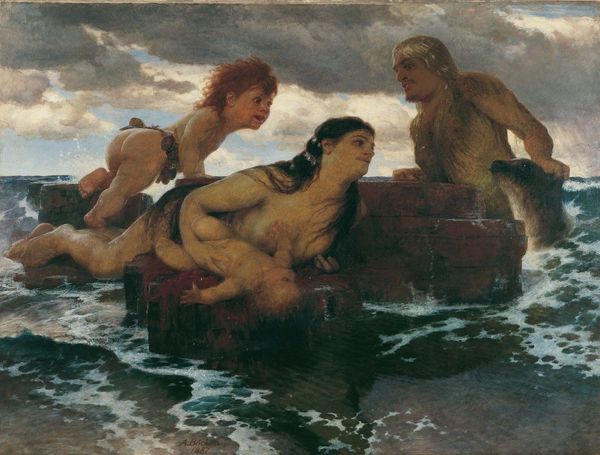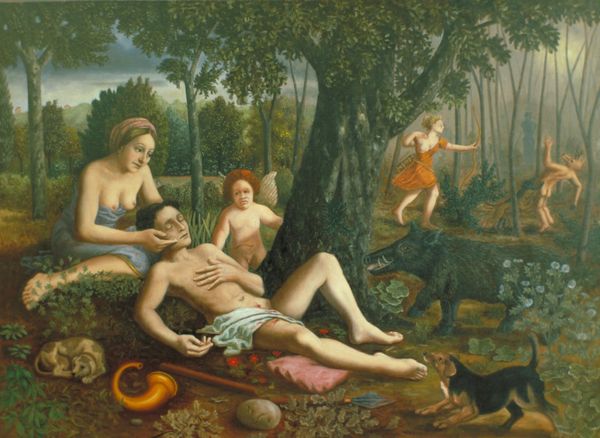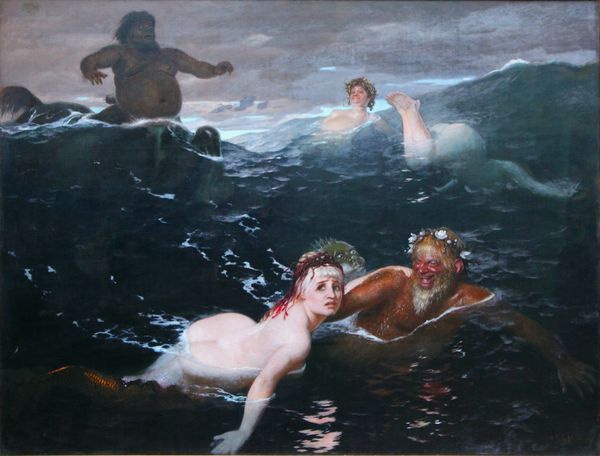
painting, oil-paint, canvas
#
allegory
#
narrative-art
#
painting
#
oil-paint
#
figuration
#
canvas
#
group-portraits
#
romanticism
#
genre-painting
#
history-painting
#
academic-art
#
realism
Dimensions: 142 cm (height) x 168.5 cm (width) (Netto), 147.2 cm (height) x 175 cm (width) x 5 cm (depth) (Brutto)
Curator: This is Ditlev Blunck’s painting, “Manhood. From the series: The Four Ages of Man," created between 1840 and 1845. It's oil on canvas and resides here at the SMK. Editor: Well, my immediate reaction is… unease. The figures look posed, almost staged, in their boat, amidst a tempestuous sea. There is such a peculiar stillness about it all that contrasts strangely with the turbulent setting. Curator: That tension might stem from Blunck’s context. As an academic painter, he straddled the line between Romanticism and Realism. This piece, in particular, reflects the artistic and societal pressures of the Danish Golden Age. Consider the materials: the carefully rendered canvas, the layering of the oils – all pointing towards a constructed, rather than spontaneously created, experience. Editor: Interesting. I'm drawn to the almost theatrical composition. Look at the characters: a stern, near-nude man gripping an oar, a melancholic woman cloaked in blue. They evoke a historical and almost allegorical sentiment, reflecting a Danish academic art style within specific schools and their aesthetics. It looks like a genre painting. Curator: Absolutely. He trained at the Academy, absorbing the conventions while simultaneously participating in debates around national identity and artistic purpose. Notice how the lighting emphasizes their musculature, particularly the man's, which adds to a sense of idealized virility, practically romanticizing labor. Editor: And consider where this piece hung, the public it addressed. Museums played a vital role then, shaping public taste and reinforcing narratives about Danish history and cultural values. It speaks to the institutional forces influencing not just art production, but the very construction of national identity at the time. Curator: Precisely. And look at the detail in the decorative trim of the boat itself. What does that tell us about the artisan and craft labor employed? How might Blunck’s studio have operated? Editor: It invites us to see art as an product of complex material and social networks. Reflecting on Blunck's 'Manhood', I'm intrigued by the way this artwork participates in constructing, or maybe even questioning, ideals of masculinity. Curator: It brings to the fore the intricate interplay between process, materials, and societal ideologies encoded within art objects of this era.
Comments
No comments
Be the first to comment and join the conversation on the ultimate creative platform.
